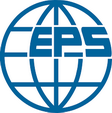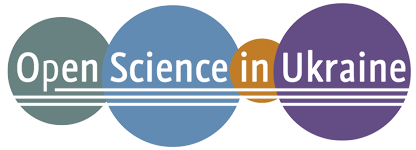Phase equilibrium diagram of the Y–Dy–Ge system at 870 K
DOI:
https://doi.org/10.15330/pcss.26.1.166-173Keywords:
intermetallics, ternary system, phase equilibria, solid solution, physical propertiesAbstract
The interaction of the components in the Y–Dy–Ge ternary system was investigated using the methods of X-ray phase analysis, microstructure and energy dispersive X-ray spectroscopy in the whole concentration range at temperature of 870 K. The existence of continuous solid solutions of substitution with the AlB2 (Y1-xDyxGe1.5), Y3Ge5 (Y3-xDyxGe5), CrB (Y1-xDyxGe), Ho11Ge10 (Y11-xDyxGe10), Sm5Ge4 (Y5-xDyxGe4) and Mn5Si3 (Y5-xDyxGe3) structure types was found.
Limited solid solutions of the substitution type, based on the binary compounds YGe1,82 (0.20 at. part Dy), YGe2 (~ 0,10 at. part Dy), DyGe1,9 (0.07 at. part Y) and DyGe1,85 (0.05 at. part Y) were observed.
The electrical and magnetic properties of the Y5Dy30Ge65 (DyGe1,85 structure type) and (YGe1,82 structure type) alloys were studied. The phase Y30Dy5Ge65 is Curie-Weiss paramagnet in the investigated temperature range. On the thermogram of the Y10Dy20Ge65 alloy during cooling, we observe an intense peak at temperature of 1207.4 K (at maximum), the thermal effect of which reflects the formation of the Dy1-xYxGe1.85 phase.
References
O. I. Bodak, Z. M. Shpyrka, I. R. Mokra, Peculiarities of the interaction of the components in the systems of two rare earth metals and germanium, J. Alloys Comp., 247, 217 (1997); https://doi.org/10.1016/S0925-8388(96)02589-3.
Z. Shpyrka, K. Kluziak, B. Rożdżyńska-Kiełbik, A. Stetskiv, V. Pavlyuk, The isothermal section of the phase diagram of Sm–Dy–Ge ternary system at 873 K, J. Phase Equilib. Diff., 39(6), 750(2018); https://doi.org/10.1007/s11669-018-0665-9.
Т. Melnyk, Z. Shpyrka, The investigation of the solid Gd–Tm–Ge system at 870 K, Visnyk Lviv Univ. Ser. Chem., 52, 3 (2011).
N. Guk, Z. Shpyrka, P. Starodub, The investigation of the Er–Tm–Ge system in the 0,5–1,0 at. part. of Ge region,Visnyk Lviv Univ. Ser. Chem., 50, 18 (2009).
Z. Shpyrka, L. Drab, The investigation of the solid solutions DyGe2–RGe2, R – Y, Gd, Tb, Ho, Er, Tm and Lu at 600 oС, Visnyk Lviv Univ. Ser. Chem., 49, 98 (2008).
Z. Shpyrka, Yu. Cheh, O. Yuziv, N. German, V. Pavlyuk, X-ray investigation of alloys on the cross sections RGe2–LuGe2 (R – Pr, Nd) and SmGe2–R′Ge2 (R′ – Gd, Tb, Ho, Er, Tm), Visnyk Lviv Univ. Ser. Chem., 60, 64 (2019); http://dx.doi.org/10.30970/vch.6001.064.
Z. Shpyrka, N. German, Phase equlibria in the quasibinary sections GdGe2–RGe2 (R = Ho, Lu), Coll. Abst. XVIII Int. Sem. Phys. and Chem. of Solids, 54 (2012).
Z. Shpyrka, N. German, V Pavlyuk, The investigation of the GdGe2–LuGe2 system at 870 K, Visnyk Lviv Univ, Ser. Khim., 55(1), 37 (2014).
V. Vorotnyak, Z. Shpyrka, N. German, The quasibinary sections GdGe2–HoGe2 at 870 K, Visnyk Lviv Univ. Ser. Chem., 54, 45 (2013).
O. Kravchuk, Z.Shpyrka, N. German, V. Pavlyuk, The investigation of the quazibinary cross section SmGe2–LuGe2, Visnyk Lviv Univ. Ser. Chem., 59, 83 (2018); https://doi.org/10.30970/vch.5901.083.
W. Kraus, G. Nolze, POWDER CELL – a program for the representation and manipulation of crystal structures and calculation of the resulting X-ray powder patterns, J. Appl. Crystallogr., 29, 301 (1996); https://doi.org/10.1107/S0021889895014920.
L. Akselrud, Yu. Grin, WinCSD: Soft ware package for crystallographical calculations (Version 4), J. Appl. Crystallogr., 47, 803 (2014); https://doi.org/10.1107/S1600576714001058.
T. B. Massalski, Binary Alloy Phase Diagrams, ASM, MetalsPark, Ohio(1990).
H. Okamoto, Desk Handbook: Phase Diagrams for Binary Alloys, Materials Park (OH): ASM (2000).
O. Schob, E. Parthe, Digermanide des Scandium and Yttrium, Monatsheftefuerchemie, 95, 1466 (1964).
V. A. Bruskov, O. I. Bodak, E. I. Gladyshevskii, The Crystal Structure of Y3Ge5 (YGe1,7), J. Phys. Cryst., 28(2), 151 (1983).
A. K. Ghosh, D. H. Douglass, Superconductity in non-cubic crystal structures, Solid St. Commun., 23, 223 (1997); https://doi.org/10.1016/0038-1098(77)90447-1.
O. Zaharko, P. Schobinger Papamantellos, C. Ritter, Antiferromagnetic ordering in the novel Ho3Ge5 and HoGe1,85 compounds studied by X-ray and neutron diffraction, J. Alloys Comp., 280, 4 (1998); https://doi.org/10.1016/S0925-8388(98)00555-6.
O. Oleksyn, P. Schobinger Papamantellos, C. Ritter, C. H. de Groot, K. H. J. Buschow,Structure and magnetic ordering in the defect compound ErGe1,83, J. Alloys Comp., 252, 53 (1997).
Z. S. Staskevych, A. M. Goryn, Z. M. Shpyrka, The investigation of the physical properties of alloys of the ternary Y–Dy–Ge system, Coll. Abst. X Ukr. Sci. conf. Students and graduate students “Chemical Karazinreadings – 2018”. 53 (2018).
Downloads
Published
How to Cite
Issue
Section
License
Copyright (c) 2025 Z. Shpyrka , Z. Staskevych, A. Horyn, V. Pavlyuk

This work is licensed under a Creative Commons Attribution 3.0 Unported License.









